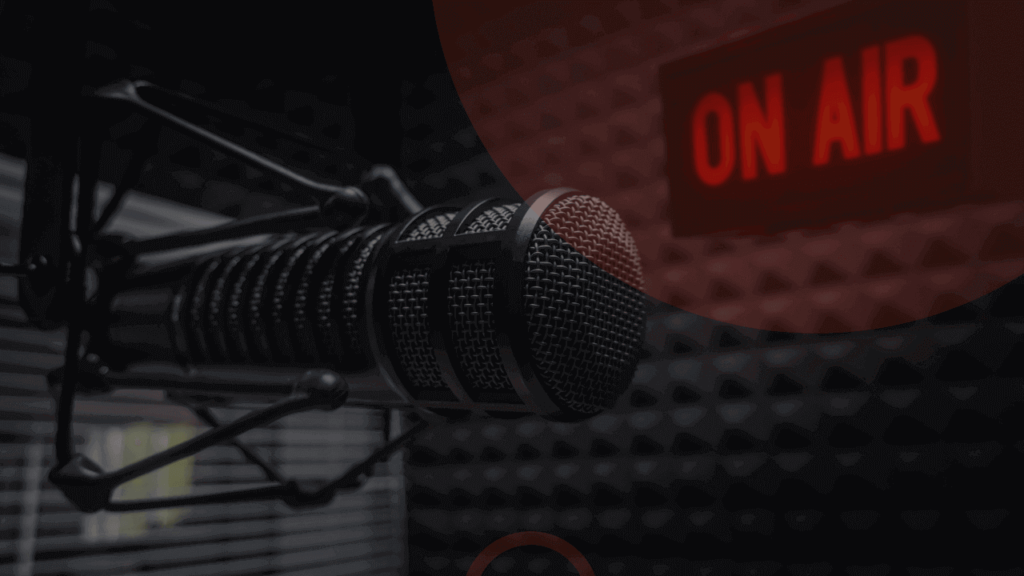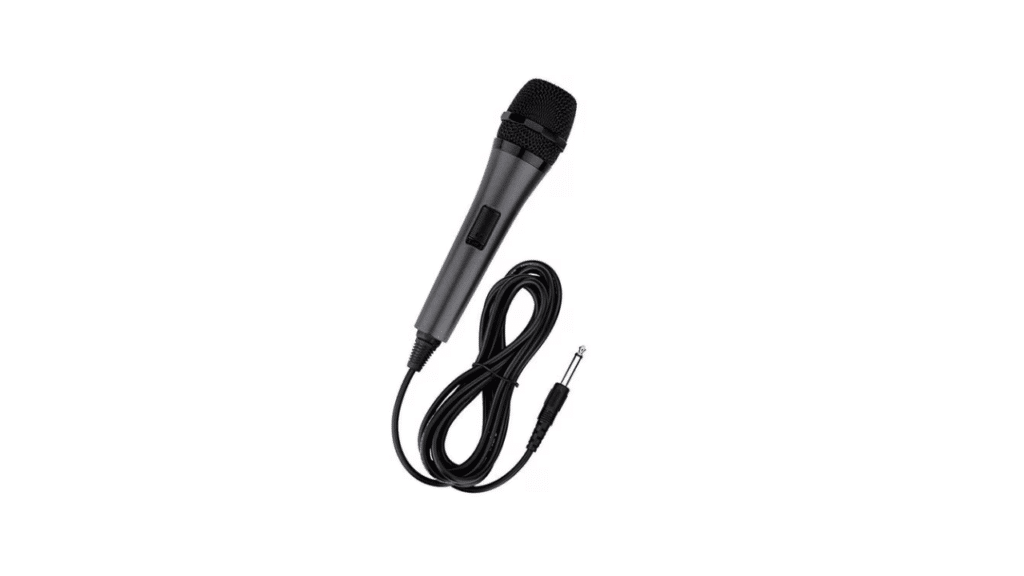Choosing the best microphone for your YouTube studio will help you build a successful YouTube career. First, you don’t need the best microphone to start your YouTube career.
You can start your YouTube journey with budget-friendly microphones like the Fifine condenser K669B, Maono AU-A04, or MAONO PM422. But first, you realise what kinds of microphones will best fit your content.
On the other hand, all the YouTubers use a different microphone which is suitable for their work, like Rode NT-USB, Blue Yeti, HyperX QuadCast, SM7B, BOYA BY-M1, Zoom H5, and many more.
One kind of microphone is used in a home studio, but a home studio microphone is suitable for outside video recording. On the other hand, those microphones are used outside video recording; they do not work well in a studio.
Quick Access
ToggleWhat is a Microphone?

A microphone is a device that translates sound vibrations in the air into electrical signals or scribes them to a recording medium. It serves as a transducer, converting one form of energy into another.
Microphones come in many types, each suitable for specific applications. For instance, Dynamic microphones are robust and used in live sound environments, while Condenser microphones are sensitive and ideal for studio recordings.
Microphones work based on various principles, including electromagnetic induction (dynamic microphones), capacitance change (condenser microphones), and piezoelectric generation. These principles determine the microphone’s sensitivity, frequency response, noise floor, and other characteristics.
Lastly, the design and construction of a microphone greatly influence its directional characteristics and sound quality. Some designs aim for accurate reproduction of source sound (linear or flat response), while others colour the sound to give it a specific tone desired in the industry.
What Microphones Do YouTubers Use?

YouTubers working primarily outside or in a field setting often prefer shotgun microphones, such as the RØDE VideoMic Pro. This type of microphone is ideal for outdoor usage due to its super-cardioid polar pattern, which focuses on capturing sounds from in front of the microphone and minimises background noise.
Lavalier microphones like the BOYareM1 are also famous for outdoor YouTubers. These small, clip-on microphones offer hands-free operation and provide close-miked speech, making them perfect for bloggers, interviewers, or presenters.
For YouTubers with a home studio, condenser microphones like the Audio-Technica AT2020 or RØDE NT1-A are commonly used. These microphones are lauded for their superior sound quality and sensitivity, capturing a wide frequency range and delivering a clear and detailed audio output.
Another favourite among studio-based YouTubers is the dynamic microphone, such as the Shure SM7B or the Rode NT-USB. Known for their robustness and durability, these microphones are perfect for podcasts and live streams, offering excellent sound isolation and reducing unwanted background noise.
Dynamic VS Condenser Microphone For Recording YouTube Video
Dynamic and the Condenser are the most common types of microphones used in recording YouTube videos.

Dynamic microphones are ideal for loud sound sources, such as vocals and instruments, as they can handle high sound pressure levels (SPL) without distorting the audio captured.

On the other hand, condenser microphones are perfect for capturing subtle nuances in quiet sounds due to their low self-noise and high sensitivity. They are also more responsive to high-frequency sounds, making them the preferred choice for recording acoustic instruments and vocals.
Both microphones have their strengths and weaknesses, but ultimately, it comes down to personal preference and the type of content being created.
Dynamic microphones offer better sound isolation and are less sensitive to handling noise, while condenser microphones provide a more detailed audio output and require an external power source.
Wired VS Wireless Microphone for YouTubers
Wired and Wireless microphones are two popular options for content creators on YouTube.

Wired microphones, such as the Shure SM7B or the Rode NT-USB, have a connection to the recording device via a cable. This type of microphone is preferred for its reliability and consistency in delivering high-quality audio signals.

Wireless microphones, like the DJI Mic and Rode Wireless GO II, offer more freedom of movement, making them ideal for on-camera presentations and performances. However, they are susceptible to interference and require proper setup and maintenance to ensure precise audio transmission.
As a YouTuber, it is essential to consider your recording environment and content type when choosing between wired or wireless microphones. For studio-based videos with minimal movement, a wired microphone may be sufficient.
However, a wireless microphone might offer more convenience and flexibility for outdoor and on-the-go recordings. Ultimately, it is a personal choice and may depend on budget and technical preferences.
Most YouTubers opt for microphones like the RØDE VideoMic Pro, BOYA M1, Audio-Technica AT2020, or the Shure SM7B, depending on their specific recording environments and content type. Choosing between dynamic and condenser or wired and wireless microphones mainly depends on personal preferences, budget, and technical requirements.
The Rode NT-USB microphone is recognised as the number one microphone for YouTube due to its exceptional sound quality, versatility, and ease of use. This USB condenser microphone is perfect for voice-overs, podcasts, and even musical performances, making it a popular choice among many content creators.
A good microphone is crucial for producing YouTube content as it significantly improves your video’s audio quality, enhancing viewer engagement and satisfaction. Viewers might tolerate lower video quality, but poor audio often leads to a swift exit.
Most YouTubers use a range of equipment for recording, but microphones like the RØDE VideoMic Pro, BOYA M1, Audio-Technica AT2020, and the Shure SM7B are particularly popular. The choice of microphone often depends on the content type, recording environment, personal preferences, and technical requirements.
Indeed, investing in a good microphone for YouTube content creation is essential as it significantly enhances the audio quality of the videos, thereby improving the overall viewer experience. The choice of the microphone, whether it is RØDE VideoMic Pro, BOYA M1, Audio-Technica AT2020, or the Shure SM7B, largely depends on the content type, recording environment, and the creator’s personal and technical preferences.
Conclusion
All the YouTubers use a different microphone suitable for their specific needs and recording environments.
The right microphone can make a significant difference in the quality of your YouTube videos, so it is crucial to research and invest in the best option for you.
Whether it’s a dynamic or condenser microphone, wired or wireless, finding the perfect fit can take your content creation to the next level.
Most YouTubers use condenser microphones for their superior sound quality and sensitivity, making them perfect for recording vocals and instruments. However, dynamic microphones have their strengths and are preferred by some creators for their robustness and durability.
Here are the best microphones which are used by lots of popular YouTubers
- Rode NT-USB
- Audio-Technica AT2020
- Shure SM7B
- Rode VideoMic Pro
- BOYA M1
- DJI Mic
- Rode Wireless GO II



